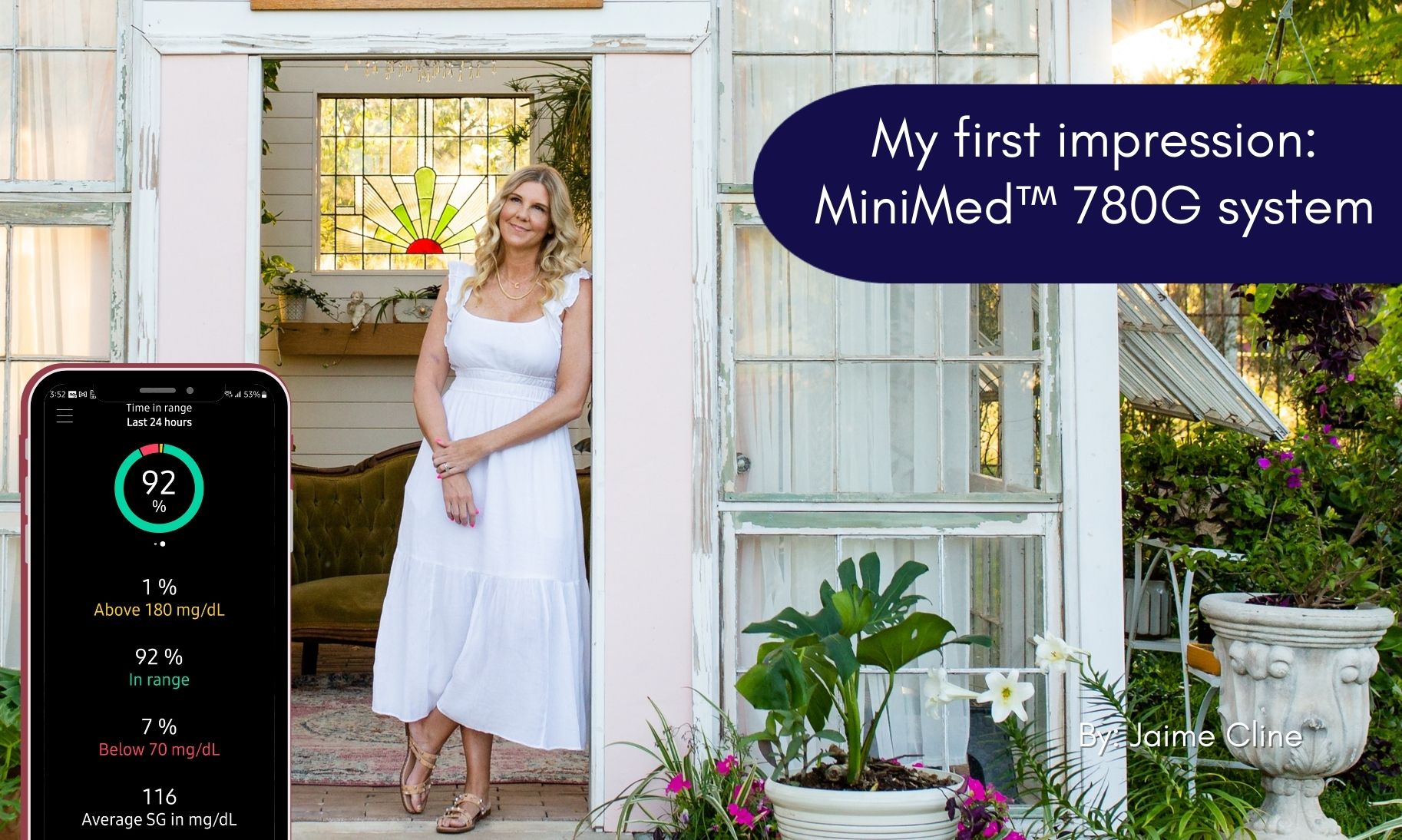A day in the life: MDI VS. insulin pump therapy with CGM

Insulin injections vs. automated insulin delivery system
People living with diabetes can choose several treatment options. For those who are insulin-dependent, you may be considering either multiple daily injections (MDI) or an automated insulin delivery (AID) system. MDI therapy is a common treatment regimen for diabetes, typically consisting of three or more injections of insulin per day. AID systems deliver insulin through an insulin pump based on glucose levels received from a connected continuous glucose monitor (CGM).
These lifestyles are fairly different in the way you may manage your diabetes. Here’s a typical day in the life of someone using MDI vs AID therapy.
Morning
After your first alarm goes off (typically followed by a few snooze buttons!), this is how your morning might go:
MDI: Wake up and check blood glucose (BG) with a fingerstick and glucose meter, so you can see how well your basal insulin worked overnight.
AID system: Wake up and view your sensor glucose (SG) on your insulin pump or mobile device with the MiniMed™ Mobile app.
Meals and snacks
MDI: Check BG, count the carbs you’re about to eat, do the math to determine how much insulin is needed, draw up a syringe of insulin (or the proper amount in an insulin pen), and take the shot.
AID system: Count the carbs you’re about to eat, input grams of carbs into the Bolus wizard, and press ACT. Underestimate your carb count? Only the MiniMed™ 780G system has Meal Detection™ technology* that can automatically deliver correction† boluses of insulin.
Post-meal/snack BG tests
MDI: Test your BG. If your blood sugar level is high, draw up a syringe of insulin, and take the shot.
AID system: The continuous glucose monitor (CGM) measures sugar levels every 5 minutes,§ sending levels to the insulin pump. If your sugar levels are trending high, the system automatically gives you more insulin.
Midday
MDI: Go about your day until you start to feel your sugar levels dropping, and then test your BG. If your blood sugar is low, you’ll need to eat a snack.
AID system: The CGM continues to measure sugar levels every 5 minutes.§ If your sugar levels are trending low, the system automatically reduces the amount of insulin delivered.
Exercise
MDI: Before exercising, it’s good to see where your BG is to determine if you need a quick snack or juice. Otherwise, get started!
AID system: Keep your insulin pump on and simply tuck it away so it doesn't bounce around too much. No need to interrupt your workout — the system automatically adjusts insulin delivery.§
Post-exercise
MDI: After exercising, you may want to test your BG again. If you’re too high, you’ll need to administer more insulin. If you’re low, drink some juice.
AID system: If you need to shower off after an intense workout, just disconnect and suspend your insulin pump while you shower, then reconnect as soon as you’re done. With the auto correction feature on the MiniMed™ 780G system, it can correct for the few minutes you were disconnected from the pump.
Middle of the night
MDI: You may wake up in the middle of the night sweating and feeling shaky. That’s a sign that your blood sugar is low, and you need juice right away — you probably have some ready next to your bed. You’ll want to test your BG to determine how much sugar you need to correct the low, and drink some juice. Then it’s back to bed to fall asleep.
AID system: Sleep better with real-time insulin adjustments and corrections† all day and night. No need to wake, test, or eat!
Summary
On MDI, by the end of the day, you’ve likely had between 8-10 insulin injections via syringe or insulin pen. Using an insulin pump can make managing diabetes easier. Are you ready to try an automated insulin delivery system? Check out the MiniMed™ 780G system!
References
*Taking a bolus 15 – 20 min before a meal helps to keep blood sugar levels under control after eating.
§ Refers to SmartGuard™ feature. Individual results may vary.
† Refers to auto correct, which provides bolus assistance. Can deliver all correction doses automatically without user interaction, feature can be turned on and off.
Important safety information: MiniMed™ 780G system with SmartGuard™ technology with Guardian™ 4 sensor
The MiniMed™ 780G system is intended for continuous delivery of basal insulin at selectable rates, and the administration of insulin boluses at selectable amounts for the management of type 1 diabetes mellitus in persons seven years of age and older requiring insulin as well as for the continuous monitoring and trending of glucose levels in the fluid under the skin. The MiniMed™ 780G system includes SmartGuard™ technology, which can be programmed to automatically adjust insulin delivery based on the continuous glucose monitoring (CGM) sensor glucose values and can suspend delivery of insulin when the sensor glucose (SG) value falls below or is predicted to fall below predefined threshold values.
The Medtronic MiniMed™ 780G system consists of the following devices: MiniMed™ 780G insulin pump, the Guardian™ 4 transmitter, the Guardian™ 4 sensor, One-press serter, the Accu-Chek™ Guide Link blood glucose meter, and the Accu-Chek™ Guide test strips. The system requires a prescription from a healthcare professional.
The Guardian™ 4 sensor is intended for use with the MiniMed™ 780G system and the Guardian 4 transmitter to monitor glucose levels for the management of diabetes. The sensor is intended for single use and requires a prescription. The Guardian™ 4 sensor is indicated for up to seven days of continuous use.
The Guardian™ 4 sensor is not intended to be used directly to make therapy adjustments while the MiniMed™ 780G is operating in manual mode. All therapy adjustments in manual mode should be based on measurements obtained using a blood glucose meter and not on values provided by the Guardian™ 4 sensor. The Guardian™ 4 sensor has been studied and is approved for use in patients ages 7 years and older and in the arm insertion site only. Do not use the Guardian™ 4 sensor in the abdomen or other body sites including the buttocks, due to unknown or different performance that could result in hypoglycemia or hyperglycemia.
WARNING: Do not use the SmartGuard™ feature for people who require less than 8 units or more than 250 units of total daily insulin per day. A total daily dose of at least 8 units, but no more than 250 units, is required to operate in the SmartGuard™ feature. |



